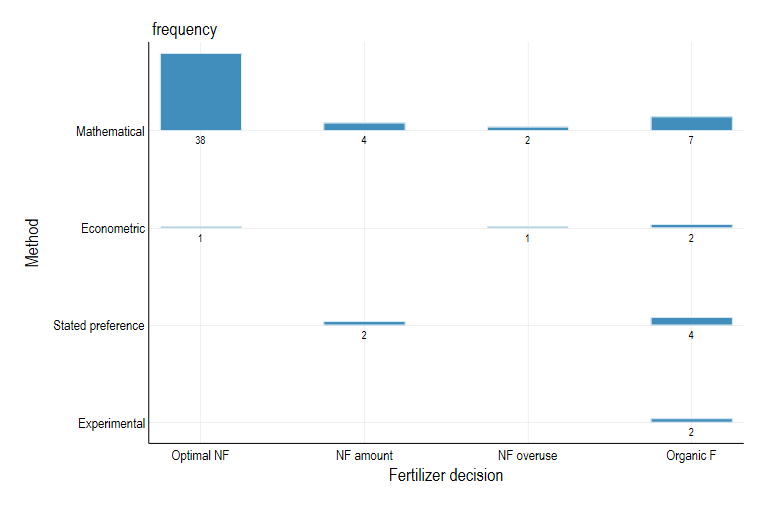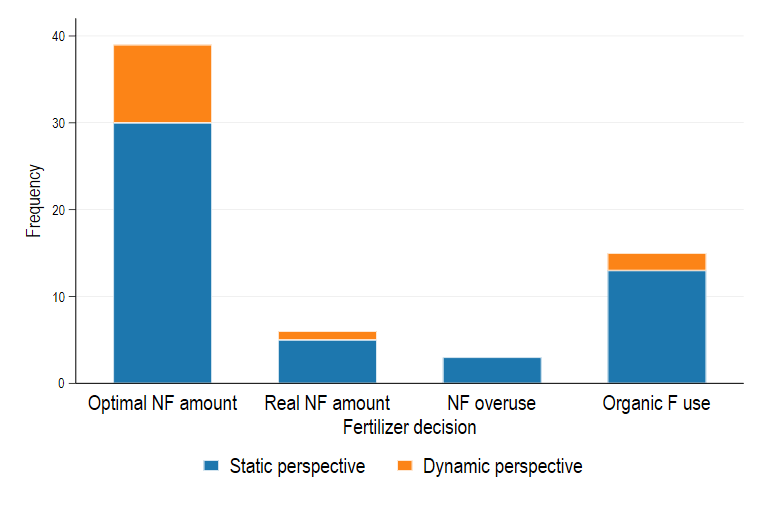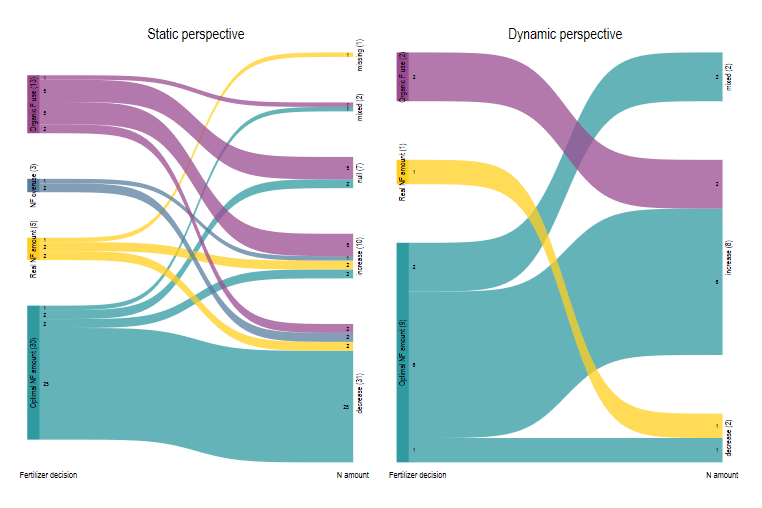Understanding Farmers’ Fertiliser Decisions: The Role of Behavioural Factors (Deliverable D5.1)
Fertiliser plays a crucial role in ensuring global food security. However, its
overuse can lead to environmental pollution, while the energy-intensive production of mineral nitrogen fertiliser
contributes significantly to carbon dioxide emissions. In response, the European Union and its member states have
introduced policies to regulate fertiliser use at the farm level. Despite these efforts, farmers often deviate from the
recommended fertiliser application rates—not only overapplying but also underapplying fertiliser. Such behaviour
challenges traditional economic models based on profit maximisation and rational choice theory, highlighting the need
for a deeper understanding of what drives farmers' fertiliser decisions.

In Deliverable D5.1 – Farmers’ Fertiliser Decision, we explore the behavioural factors influencing how farmers decide on the quantity and timing of fertiliser application. Our conceptual framework recognises that these decisions are made under conditions of risk and uncertainty, shaped by factors such as fluctuating fertiliser and crop prices, as well as unpredictable yields. Behavioural traits—including risk preferences, loss aversion, ambiguity preferences, and probabilistic distortions—play a key role in shaping fertiliser use. Additionally, we examine both standard and non-standard discounting factors, such as hyperbolic discounting, given the intertemporal nature of fertiliser application.
To gain a clearer picture of these influences, this deliverable presents the main findings from a systematic literature review, conducted using the Preferred Reporting Items for Systematic Reviews and Meta-Analyses (PRISMA) approach in high-income countries. We synthesise insights from 63 peer-reviewed studies, analysing how behavioural factors impact fertiliser decisions and how they can be incorporated into decision-making models.
Which Behavioural Factors Have Been Studied?
With two exceptions, all reviewed studies investigate the role of risk preferences in an expected utility theory (EUT) framework to explain fertiliser applications. Thus, current research mostly ignores theories and behavioural factors under uncertainty and ambiguity that may better capture farmers’ deviations from optimal fertiliser decisions.
Which Fertiliser Decisions Have Been Analysed?
As shown in Figure 1, most studies optimally determine fertiliser decisions using mathematical methods, assuming certain levels of risk preferences. Yet, only a limited number of studies investigate the relationship between elicited behavioural drivers and farmers’ actual fertiliser decisions (i.e., fertiliser amount, overuse, and organic fertiliser use) using econometric, stated preference, and experimental methods. Furthermore, it is important to note that the risks and uncertainties associated with fertiliser decisions are dynamic: they are greatest at the beginning of the growing season and gradually decrease towards harvest. Therefore, it is important to model fertiliser application over time from a dynamic perspective. Yet, as displayed in Figure 2, most existing literature focuses solely on a static perspective (i.e., annual fertiliser usage) rather than differentiating between fertiliser decisions across time (dynamic perspective).

Figure 1: Interaction frequencies of studied fertiliser decisions and applied methods to incorporate behavioural factors. Note: “NF” refers to nitrogen fertiliser.

Figure 2: Frequencies of studied fertiliser decisions in the static and dynamic perspectives.
How Do Risk Preferences Associate with Fertiliser Decisions?
In the static perspective in Figure 3, we observe that higher risk aversion among farmers is often associated with a lower amount of nitrogen fertiliser, which is particularly notable in the optimal nitrogen fertiliser amount. However, this shifts in the dynamic fertiliser perspective, which not only considers the total annual amount of fertiliser applied but distinguishes between different times at which fertilisation occurs (usually: early versus later/total application). We find that incorporating a dynamic perspective is crucial in ex-ante analyses of how risk aversion correlates with total nitrogen fertiliser use in a farming year.

Figure 3: Association between higher risk aversion and total annual nitrogen (N) amount per fertiliser decision.
Recommendations for Future Research
Based on these findings, we recommend that future research examine the dynamic relationship between behavioural factors beyond risk preferences and farmers' fertiliser decisions. Loss aversion, ambiguity preferences, probability distortions, and probabilistic expectations may help explain deviations from optimal fertiliser use. Stated preference methods and economic experiments can assess farmers' preferences and their link to actual fertilisation behaviour. Additionally, mathematical models could incorporate these behavioural factors (e.g., using cumulative prospect theory) when feasible. Insights from stated-preference studies and experiments could improve these models, enhancing policy design to reduce fertiliser consumption. Despite challenges, this review emphasises the need for a more integrated approach combining behavioural research and different methodological approaches.
